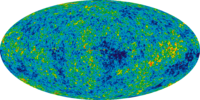
Photo from wikipedia
A process based on electrical discharge plasma was tested for the transformation of perfluorooctanoic acid (PFOA). The plasma-based process was adapted for two cases, high removal rate and high removal… Click to show full abstract
A process based on electrical discharge plasma was tested for the transformation of perfluorooctanoic acid (PFOA). The plasma-based process was adapted for two cases, high removal rate and high removal efficiency. During a 30 min treatment, the PFOA concentration in 1.4 L of aqueous solutions was reduced by 90% with the high rate process (76.5 W input power) and 25% with the high efficiency process (4.1 W input power). Both achieved remarkably high PFOA removal and defluorination efficiencies compared to leading alternative technologies. The high efficiency process was also used to treat groundwater containing PFOA and several cocontaminants including perfluorooctanesulfonate (PFOS), demonstrating that the process was not significantly affected by cocontaminants and that the process was capable of rapidly degrading PFOS. Preliminary investigation into the byproducts showed that only about 10% of PFOA and PFOS is converted into shorter-chain perfluoroalkyl acids (PFAAs). Investigation into the types of reactive species involved in primary reactions with PFOA showed that hydroxyl and superoxide radicals, which are typically the primary plasma-derived reactive species, play no significant role. Instead, scavenger experiments indicated that aqueous electrons account for a sizable fraction of the transformation, with free electrons and/or argon ions proposed to account for the remainder.
Journal Title: Environmental science & technology
Year Published: 2017
Link to full text (if available)
Share on Social Media: Sign Up to like & get
recommendations!